Play
Part 1 - Step by Step
- InstructInstruct students that they are going to participate in the Water Transit Competition with their Hero Robots. First, they will practice for the competition by driving the Hero Robot to lift the Water Pipe off the trailer and transport it to the Water Tower tile, and then they will practice to lift the Water Tower. View the video below to learn more about the driving and scoring for the Water Transit activities. The end of the video shows an example of how a Hero Robot could be driven to accomplish the tasks.
Note: You can choose how students interact with the video content. The video is embedded within the Lab 3 Image Slideshow to share easily with students. Or, you may choose to watch the video yourself and present the information to your students in class.
- ModelModel for students how to remote control drive the Hero Robot to lift the Water Pipe off the trailer and transport it to the Water Tower tile and then raise the Water Tower. Students will be working to practice each of these activities.
-
First, model for students how to launch VEXcode GO, connect their Brain to their device, and open the Drive tab.

Select the Drive tab Note: When you first connect your robot to your device, the Gyro built into the Brain may calibrate, causing the robot to move on its own for a moment. This is an expected behavior, do not touch the robot while it's calibrating.
-
Next, model for students how to select the Motor option in Port 2, to control the arm motor on the Hero Robot.
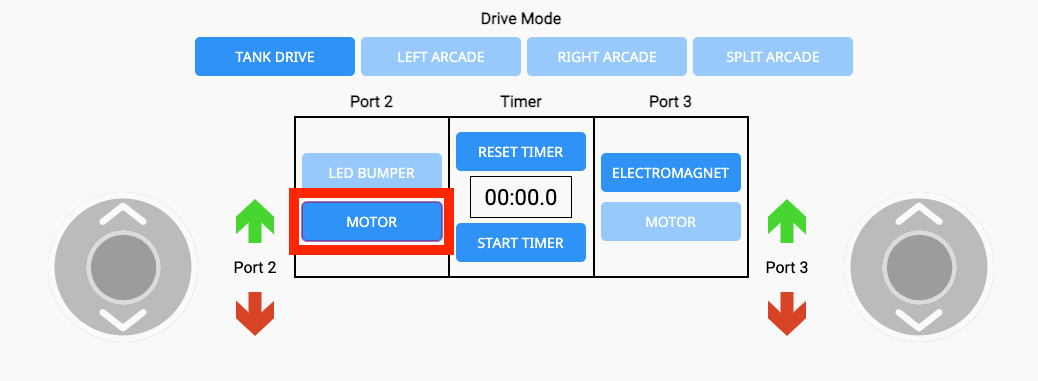
Select the Motor option for Port 2 -
Model for students how to change the Drive Mode by selecting the buttons – Tank Drive, Left Arcade, Right Arcade, or Split Arcade. View the video clip below to see the movement of the joysticks as each Drive Mode is selected.
Video file- For reference, the Drive Modes correspond to the following controls:
- Tank Drive: Each joystick controls a different motor.
- Left Arcade: One joystick that controls both motors. The joystick is on the left-hand side of the screen.
- Right Arcade: One joystick that controls both motors. The joystick is on the right-hand side of the screen.
- Split Arcade: Two joysticks. One controls left and right movements and the other controls forward and reverse movements.
- For reference, the Drive Modes correspond to the following controls:
- Model for students how to raise and lower the arm motor using the green and red arrows around Port 2.
-
Note: The arrows correspond to the direction the motor is spinning, not necessarily the up and down movements of the arm itself.
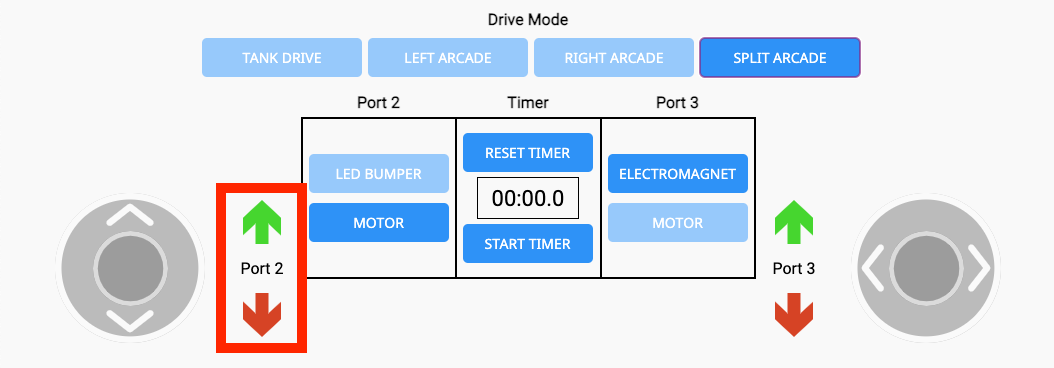
Port 2 Motor controls
-
- Next, set the Hero Robot on the green starting Tile, and model how to lift the Water Pipe off the trailer and transport it to the Water Tower tile, as shown in the video in Instruct.
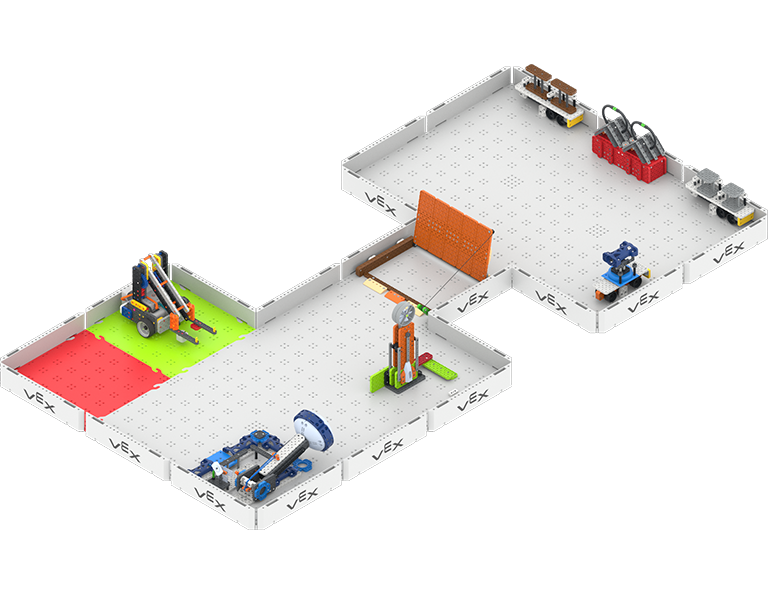
Field Setup - As students are practicing driving the Hero Robot to complete the Water Transit activities on the Field, you can use the Water Transit Practice Activity (Google Doc/.docx/.pdf) to guide them through how to practice.
- If students finish the practice tasks early before it is time to swap, and need an additional challenge, have them try one of the 'Level Up' extensions on the Water Transit Practice Activity.
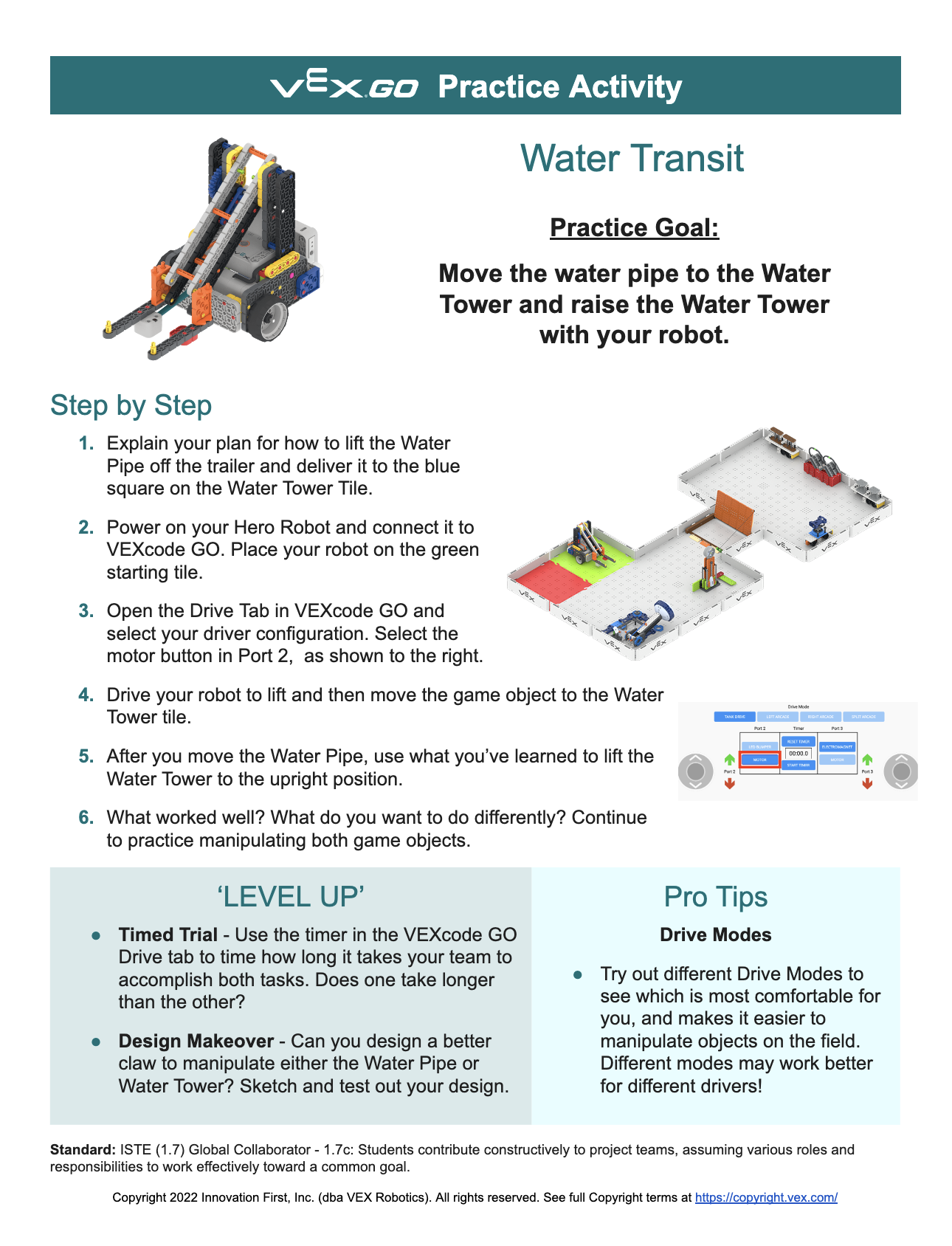
Water Transit Practice Activity -
- FacilitateFacilitate taking turns and collaborating between and among teams as they are practicing to drive their Hero Robots. As you circulate around the room, ask questions like:
- How are you taking turns driving on your team, so everyone has a chance to practice?
- Which game task do you prefer – lifting the Water Pipe off the trailer, transporting it to the Water Tower tile, or lifting the Water Tower? Why?
- What is one idea your teammate had while practicing? How did that idea change your team's strategy?
- What is one challenge that you are working together to solve in this activity? What problem solving strategies have you tried so far? What will you try next?
You may want to have multiple areas for practice set up around the room. By dividing the tasks into two sections, you can divide the Field and create one smaller practice area for each set of tasks. For additional practice options, you can have students use extra GO Kit pieces or classroom materials to create objects like the water pipe. You can use this image of the water pipe for reference.
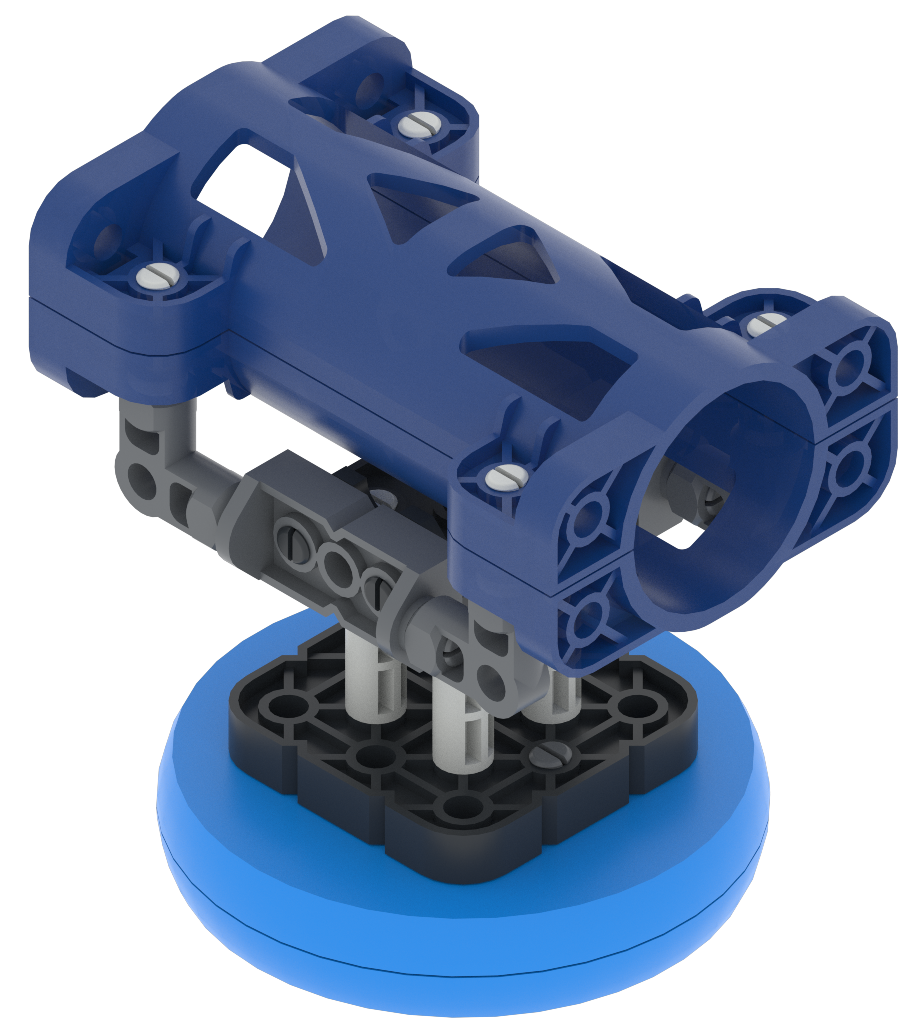
Water pipe game element Facilitate conversations about scoring strategy as students are practicing. You may want to allow extra time for Play Part 1, to enable all students to have enough time to get comfortable with both sets of tasks, so that they can begin to think about strategy. Encourage teams to look at what others are doing around the room, so that they can learn from other teams' experiences as well.
- What have they figured out through practice that has helped them be successful?
- What strategy did the team use to lift the Water Pipe off the trailer?
- What helps them lift the Water Tower?
- In what order are they completing different tasks? How might this affect their choice of how to score in a competition setting?
- RemindRemind students that there are many different ways to score in this stage of the competition. They should prioritize what scoring activities are best for their team.
If teams have ideas for robot redesigns to help them score, remind them they can also change their robot design! Teams may want to change the design of their robot arm to help lift and move the Water Pipe or Water Tower. Remind them that all of their designs should be sketched on a Blueprint Worksheet (Google Doc/.docx/.pdf) before beginning and then to test the robot after making small changes.
- AskAsk students about a time when they had to complete many different tasks, like doing chores around the house or doing homework. Even doing chores or homework in a certain order requires a strategy. Ask them questions like:
- How do you keep track of what tasks you still need to do?
- How do decide what task to do first? Last?
- Do you start with a more challenging task? Why or why not?
Mid-Play Break & Group Discussion
As soon as every group has practiced moving the Water Pipe and raising the Water Tower, come together for a brief conversation.
Now that students have practiced driving their Hero Robots to complete the Water Transit tasks, talk about how teammates worked together to drive and score.
- How did your team approach lifting and moving the Water Pipe to the Water Tower tile? What worked well? What did not work well?
- What task did your team think was simplest? Why?
- What task did your team think was hardest? Why?
Then, introduce the Water Transit Competition:
- The goal of the competition is to score as many points as you can by completing the Water Transit tasks, in a one minute match.
- Each of the following tasks is worth one point:
- Remove the Water Pipe from its trailer
- Move the Water Pipe to the Water Tower tile
- Lift the Water Tower upright
- Teams will apply what they learned in practice to help them score the most points they can in the competition!
Talk about how teams can use what they learned in practice to help them develop a strategy for the competition.
- How can you combine your strategies for different tasks into one competition strategy?
- How will your team decide on what order to complete the tasks?
- What will your team do if there is a disagreement on strategy? How will you communicate with one another to come up with a strategy?
Part 2 - Step by Step
- InstructInstruct students that they are now going to participate in the Water Transit Competition! The goal of the competition is to score as many points as you can by completing the activities they practiced in Play Part 1, in a one minute match.
Use the Water Transit Competition Activity (Google Doc/.docx/.pdf) as a guide for students as you engage in the competition.
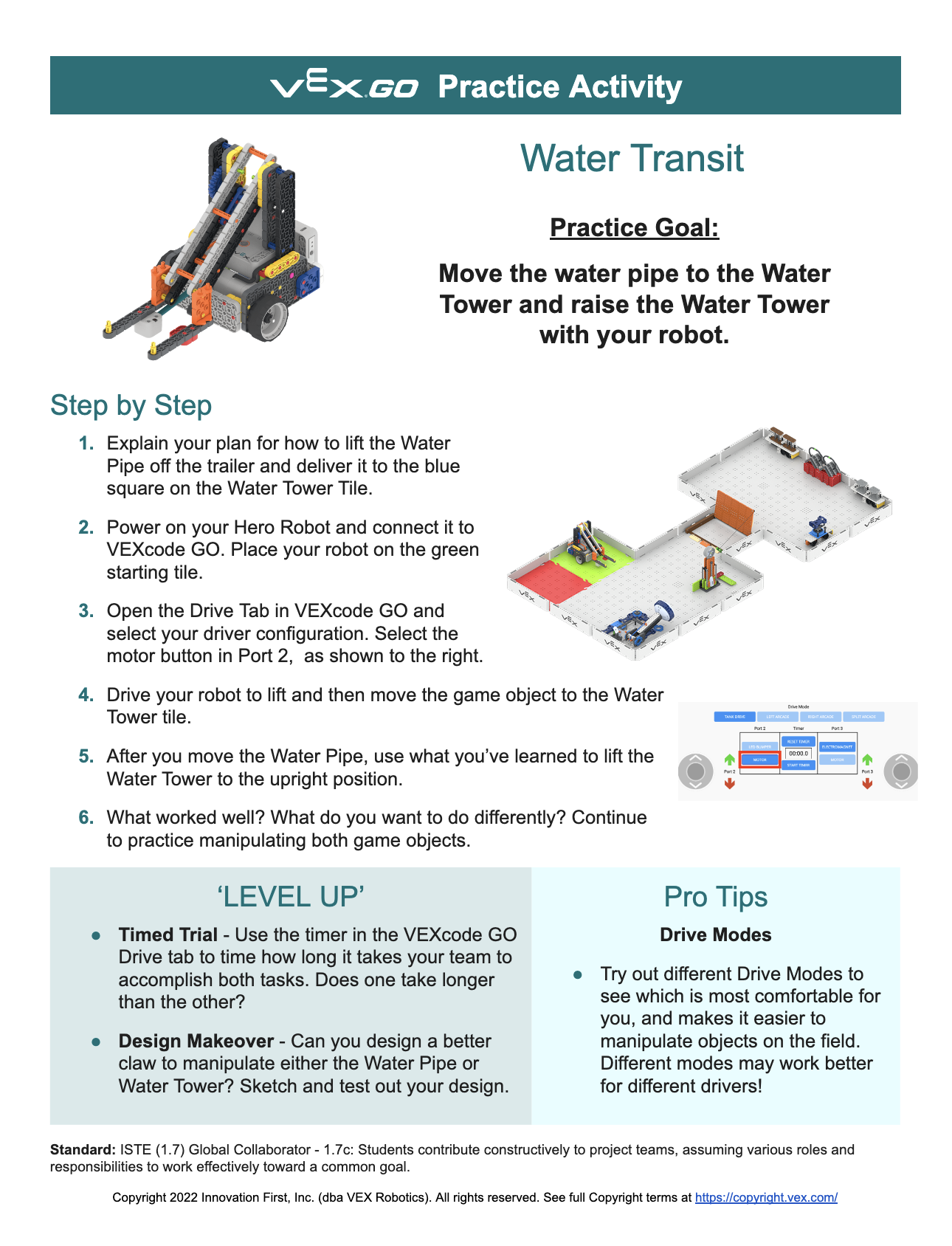
Water Transit Competition Activity - ModelModel for students how they will participate in the competition matches, and how the competition will run in the classroom.
To learn more about running a VEX GO Classroom Competition, see this article.
-
Model how to setup the Field to begin the match. The robot should begin on the green starting Tile.
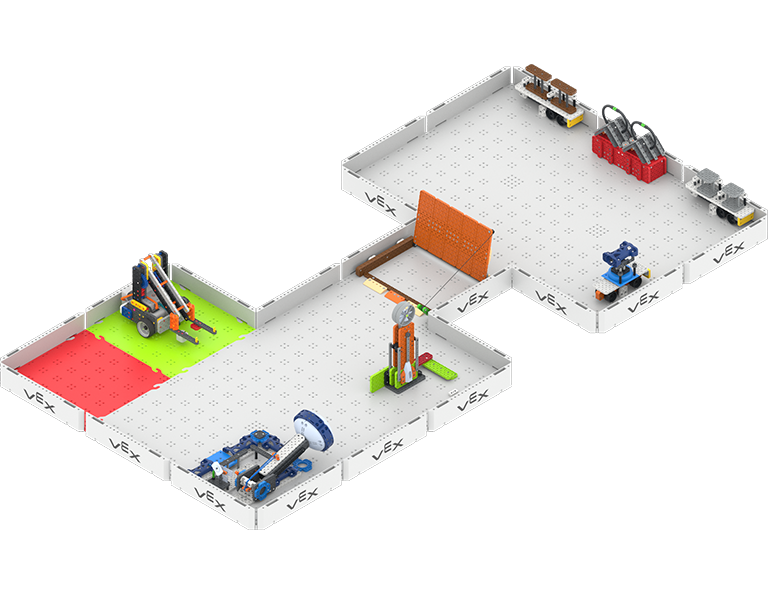
Field Setup - Share with students the match order and expectations, so that they know what they should be doing during the competition before and after their turn to drive.
-
You can use this Match Order template (Google Doc/.docx/.pdf) to show teams the order in which they will be competing. You can also use this sheet as a way to keep track of the score after each match. Try to have enough matches so that each student gets a chance to drive the robot at least once.
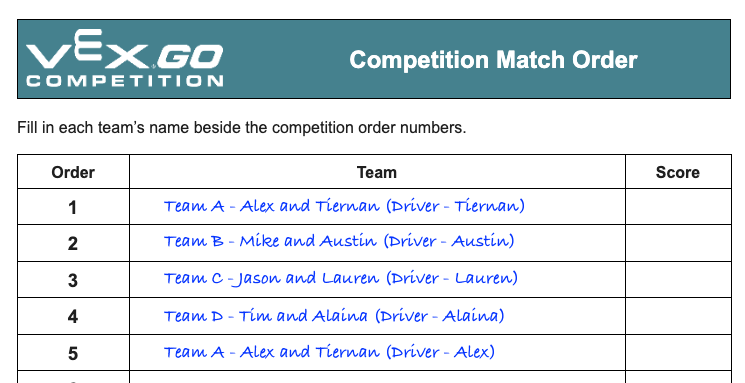
Example of a match order sheet - Demonstrate for students how you will operate the timer, and what to look and listen for to know when to start and stop driving their robots on the Field.
- Show students where they can be seated during the competition matches. If you have practice areas or other spaces students can be in during the competition, show them these areas as well, and explain how they are to be used.
- Review expectations for how to be a respectful participant in the competition. Encourage students to cheer for one another, and to be excited about the competition – this is meant to be a fun classroom experience! Be sure that students are showing good sportsmanship before, during, and after each matches.
-
- Model how a match is run. Start the timer, and drive the Hero Robot on the Field to complete the game tasks. When the timer reaches one minute, stop driving. At the end of the demonstration, count the number of completed tasks: removing the Water Pipe from the trailer, moving the Water Pipe to the Water Tower and raising the Water Tower.
- Mark the score on the Match Order Template or on the VEX GO Leaderboard.
- If you are using a VEX GO Leaderboard, show students how the scores will be entered and displayed on the Leaderboard.
- Model how to reset the Field for the next match. The Water Pipe should be put back onto the trailer, and the Water Tower should be set down again on the Water Tower Tile.
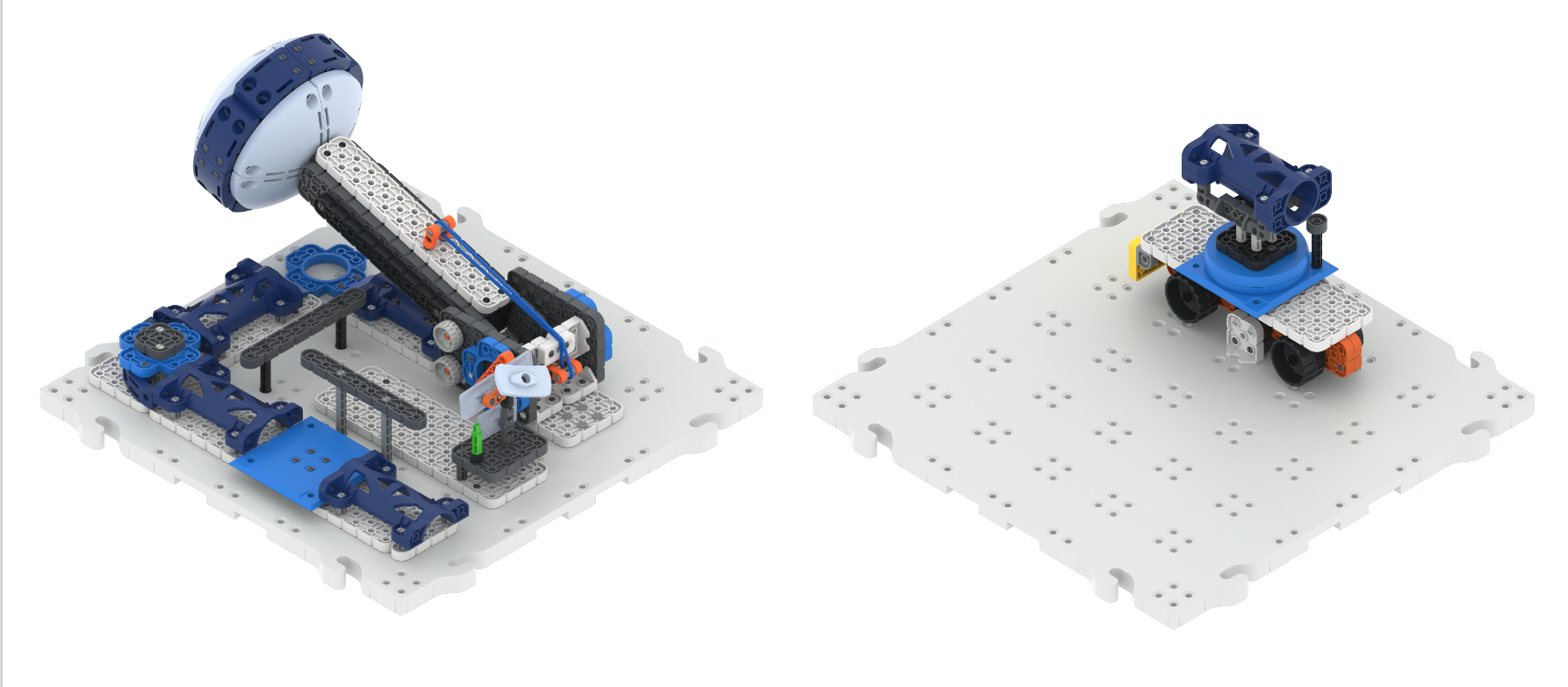
Water Tower and Pipe in original position. - Model for students how to plan a path together in their team, to begin their strategy discussions. Use this image of the Field to help facilitate the discussion, and give students a place to trace their path away from the game Field itself.
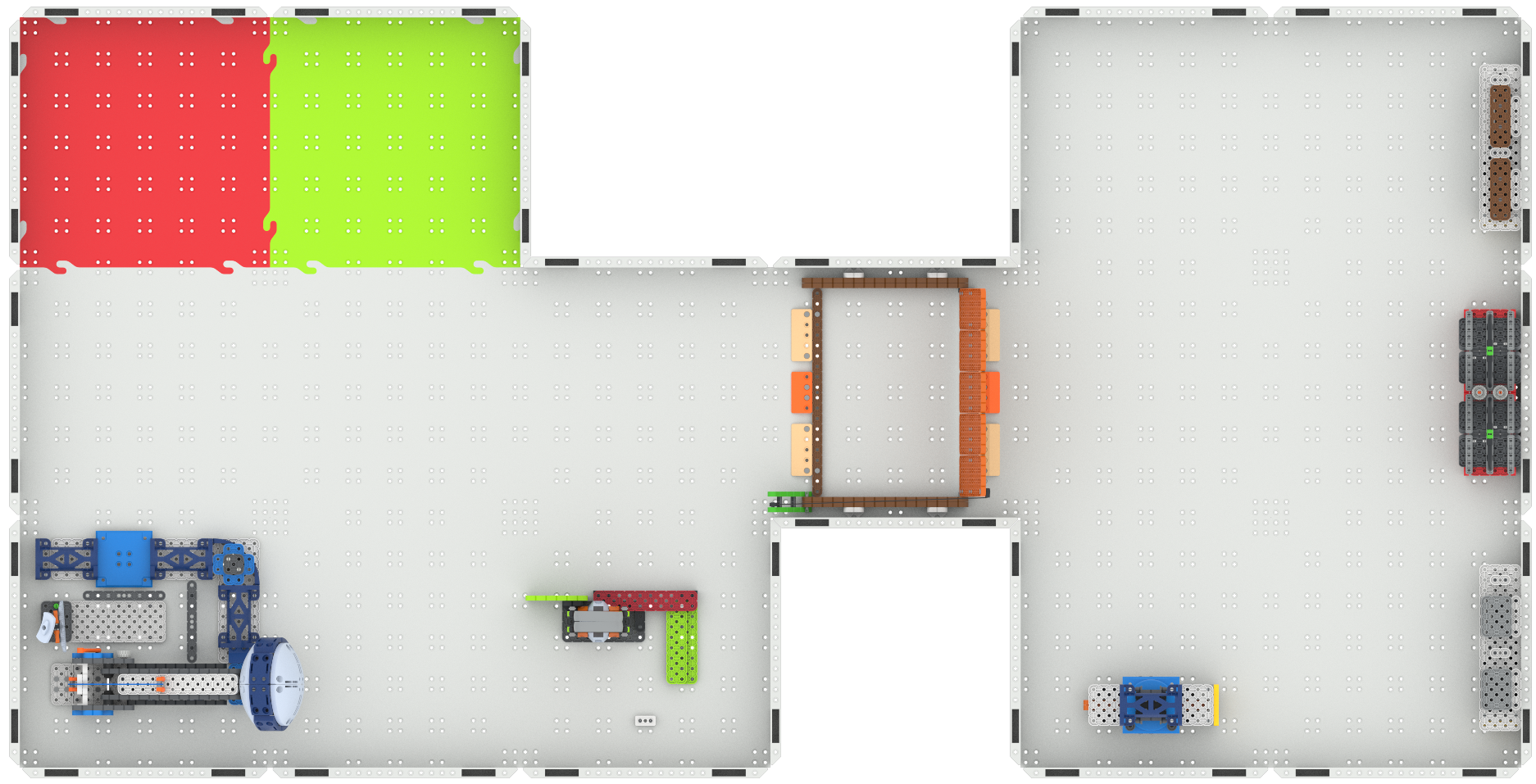
Plan a path for your robot -
- FacilitateFacilitate the classroom competition matches, and engage students in conversations about their driving and collaboration between matches. Use discussion prompts like:
Before the start of a match:
- Which team member will be driving? Can you explain your scoring strategy, or what you are going to try to do, in this match?
- What is one thing you are going to try to do the same as your practice or previous match? Why?
- What is one thing you are going to try to do differently than your practice or previous match? Why?
During a match:
- Watch how the driver is controlling the speed of the robot. What do you notice?
- Watch how the driver is using the arm of the robot. What do you notice?
- Watch how the driver is navigating from one task to another. What do you notice?
After a match:
- What is something you learned from your driving that you will use in your next match?
- What is something you learned from watching another driver that can help you in your match?
- RemindRemind students that they can continue to develop their strategy between each of their matches. They may want to change their plan from one match to the next based on what they found while driving, or something they saw another team do. Remind teams that they should always be communicating strategy ideas with their teammates, so no matter who is driving in the match the whole team is clear on what the driver is trying to do in order to score.
You may want to give students a way to take notes as they are watching the competition, using the Blueprint Worksheet (Google Doc/.docx/.pdf) or the Data Collection Sheet (Google Doc/.docx/.pdf). This way they can have a tangible way to keep track of strategy ideas as they prepare for their next match.
- AskAsk students about their experience in this competition and have them compare and contrast it to other competitive experiences they've been a part of.
- How is a robotics competition similar or different to other kinds of competitions you've been a part of?
- What is something you've learned from these competitions that can help you in other kinds of competitions or events?